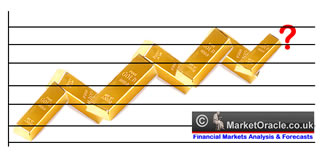Central Bankers’ Global Race to the Currency Devaluation Bottom
Currencies / Fiat Currency Oct 09, 2010 - 11:04 AM GMTBy: Mike_Larson
 Well, that pretty much seals the deal. I’m talking about the latest, lousy batch of employment data. The ADP Employer Services report out Wednesday showed the economy shedding 39,000 jobs in September — the biggest decline since January and far below the Bloomberg forecast for a gain of 20,000.
Well, that pretty much seals the deal. I’m talking about the latest, lousy batch of employment data. The ADP Employer Services report out Wednesday showed the economy shedding 39,000 jobs in September — the biggest decline since January and far below the Bloomberg forecast for a gain of 20,000.
Barring some huge surprise from this morning’s Labor Department report, the QE2 is poised to set sail. That was only reinforced by Chicago Fed President Charles Evans, who said “unemployment is too high” and inflation is “low,” and by New York Fed President William Dudley, who late last week called current economic conditions “unacceptable.”
The Fed’s goal is clearly to debase the U.S. dollar in order to create inflation. Or in the infamous words of now-Chairman Ben Bernanke from November 2002 …
“U.S. dollars have value only to the extent that they are strictly limited in supply. But the U.S. government has a technology, called a printing press (or, today, its electronic equivalent), that allows it to produce as many U.S. dollars as it wishes at essentially no cost.
“By increasing the number of U.S. dollars in circulation, or even by credibly threatening to do so, the U.S. government can also reduce the value of a dollar in terms of goods and services, which is equivalent to raising the prices in dollars of those goods and services.
“We conclude that, under a paper-money system, a determined government can always generate higher spending and hence positive inflation.”
The Cost of Competitive Devaluation
The Fed would have you believe this is good for America. That a country whose massive debts are majority-held by foreigners will never have a problem selling bonds — even as its central bank drives down the value of those bonds (in foreign currency terms).
My take? Let’s look at what the Fed’s war on your wealth has accomplished …
In the past several weeks, soybeans have surged up to 23 percent, crude oil has gained 30 percent, copper has jumped up to 39 percent, and wheat prices have soared as much as 97 percent.
The dollar? It has dropped more than 12.5 percent since June, making it more expensive to buy foreign goods and travel overseas. And gold? It has surged about 17 percent.
|
Yes, stocks have rallied — but only roughly as much as the dollar has declined. In other words, you’ve basically made no “real” gains in terms of purchasing power!
Stated another way, the Fed’s ridiculous monetary policy is creating “bad” inflation. Prices for many raw commodities are going up. So are costs for the companies you buy goods from. But your wages likely aren’t keeping pace because of the lousy labor market. And your savings accounts and fixed income securities aren’t yielding squat.
Or as Nobel Prize-winning economist Joseph Stiglitz recently told Bloomberg:
“Fed policy was supposed to reignite the American economy, but it’s not doing that … the flood of liquidity is going abroad and causing problems all over the world.”
Worse, We’re Not Alone!
It’s bad enough that our central bank is heading down the dangerous road to currency debasement. What’s worse is that other central banks are doing the same darn thing!
The Bank of Japan tried to suppress the yen by intervening massively in the currency markets a few weeks ago. Then this week, it lowered its benchmark interest rate to 0 percent from 0.1 percent and announced a new QE plan. It’s going to spend 5 trillion yen, or about $60 billion, to buy assets.
Not just any old assets like government bonds either. The BOJ said it will buy “long-term government bonds, treasury discount bills, commercial paper (CP), asset-backed CP (ABCP), corporate bonds, exchange-traded funds (ETFs), and Japan real estate investment trusts (J-REITs).”
Yes, you read that right …
The BOJ is now going to start indirectly buying commercial real estate and stocks. I have to wonder, are Beanie Babies next? What about iPods? Or hey, if tuna prices plunge, maybe BOJ policy makers could show up at the famous Tsukiji Fish Market and go nuts buying there!
Don’t forget the Bank of England either. BOE policymaker Adam Posen advocated for more QE there in late September. The Brits are currently buying 200 billion pounds (about $317 billion) worth of government bonds to artificially prop up the market and suppress the value of the pound.
Meanwhile, central bankers in other Asian countries outside of Japan are selling the heck out of their own currencies to try to keep them from appreciating rapidly against the buck.
That’s happening in Brazil, too …
|
Brazil’s finance minister Guido Mantega just warned of a global “currency war,” and doubled the tax on foreign purchases of Brazilian bonds in an attempt to stem the flood of hot money into Brazil’s markets and currency, the real.
Lastly, there’s China, perhaps the world’s biggest currency manipulator. It’s continuing to hold down the yuan despite intense international pressure.
Chinese Premier Wen Jiabao just told a business conference that “if the yuan isn’t stable, it will bring disaster to China and the world.” He added that European officials should quit bugging him, saying “Europe shouldn’t join the choir to press China to allow more yuan appreciation.”
Protecting Yourself from the Fed’s War on Your Wealth!
Bottom line? Practically every central banker in the world wants to drive his currency into the gutter. I’ve never seen anything like it — and mark my words, it isn’t going to end well!
In the meantime, you can protect yourself by continuing to hold contra-dollar hedges like those recommended in Safe Money Report.
I’d avoid long-term bonds, preferring instead to keep my maturities short. And gold? I’m a bull long-term. But I’d look to take some profits here given the massive, recent run and the risk that other countries will push back aggressively at the Fed’s dollar-debasement strategy.
Until next time,
Mike
This investment news is brought to you by Money and Markets. Money and Markets is a free daily investment newsletter from Martin D. Weiss and Weiss Research analysts offering the latest investing news and financial insights for the stock market, including tips and advice on investing in gold, energy and oil. Dr. Weiss is a leader in the fields of investing, interest rates, financial safety and economic forecasting. To view archives or subscribe, visit http://www.moneyandmarkets.com.
© 2005-2022 http://www.MarketOracle.co.uk - The Market Oracle is a FREE Daily Financial Markets Analysis & Forecasting online publication.





